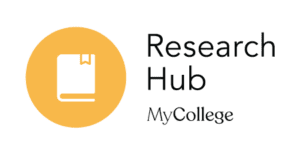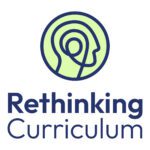Oracy as a way of communicating the curriculum

 This article has been published as part of the Rethinking Curriculum project, kindly funded by The Helen Hamlyn Trust.
This article has been published as part of the Rethinking Curriculum project, kindly funded by The Helen Hamlyn Trust.
Hydeh Fayaz, Acting Deputy Headteacher at St Matthew’s Primary School
Oracy, ‘learning how to talk and learning through talk’, enables our pupils in Nechells, Birmingham, to flourish. In a world where a critical eye is necessary, a sense of self among young people is vital and a voice to advocate is powerful, oracy is one of the key tools we use to equip our children.
St Matthew’s is a one form-entry primary in Nechells. Our children are beautifully diverse – 78 per cent of our pupils are bilingual and 68 per cent qualify for Pupil PremiumAdditional funding for publicly funded schools in England to raise the attainment of disadvantaged pupils of all abilities. We want our pupils to develop their sense of self, learn and attain, be able to share their opinions within their community and beyond and act to make a difference. Through working on oracy, we have seen a notable difference in our pupils’ abilities to express themselves, challenge others, justify their ideas and support peers.
To develop our approach to oracy, we looked at research by Oracy Cambridge, Robin Alexander (2004) and Lauren Resnick (2018). It became clear that ‘messy’ talk, or exploratory talk (Mercer, 2008) is hugely important to develop children’s understanding. Exploratory talk happens at the beginning of the journey to understanding when children are still figuring out exactly how to explain or articulate their learning. It may not be succinct, but it allows time for children to listen to their peers and work out their own thoughts. The classroom culture is one built on safety: whatever they say is listened to and thought about. Whether you’re a novice learner or a learner who has good background knowledge in a specific domain, spending time in this ‘exploratory talk’ space is crucial; to have time to formulate your talk to articulate what you mean will only help to deepen those links within your schema.
To enable a culture of exploratory talk we began by identifying good ground rules for active listening and discussion. We co-constructed a toolkit based on these ground rules at the beginning of the academic year. To do this, we provided children with provocations such as ‘Listening is easy’ or ‘I know when someone is listening to me’. From these, we created a toolkit about what listening looks like in our classroom and how we turn ‘just listening’ into ‘active listening’ – thinking plus listening.
To further deepen children’s understanding of the curriculum, we wanted to make sure that the questions or provocations we provided were purposeful and rich. To help, we used Talking Points (Dawes, 2012). This book was significant for creating inclusive yet challenging questions about the curriculum in its broadest sense – not just talking about the taught curriculum but the fibres of the school: how we treat one another, how we lead assemblies, how our children practise advocacy in their communities. Reframing a question to a talking point transformed what may have been 20 percent of the class thinking, to participation by all. For example, in Year 5, we study the poem ‘Mementos’ by Charlotte Bronte. Our talking point is: ‘This poem only evokes feelings of decay.’ A talking point with literature enables children to think about the impact of the reader and why authors have used a specific genre or grammar technique. Equally, using a talking point to discuss talk in itself encourages varying opinions and voices. For example, prompting a discussion with ‘I know when someone is listening to me’ enables children to think and co-construct a toolkit for active listening.
To further children’s ownership of the talk that is produced within lessons, we delved into Lauren Resnick’s Accountable Talk (2018), which is underpinned by the philosophy that our minds are socially formed:
‘In Accountable Talk classrooms, children hold themselves responsible for getting the facts right, for thinking through challenges together and for following protocols which encourage participation.’ (pg. 17)
In order to understand what accountable talk meant for our school, we engaged in professional development (PD). To design our PD iteratively, we used the EEF’s guidance report on effective professional development (2021) to identify the mechanisms behind impactful PD. During the first INSET day, our staff read Accountable Talk (2018) and reflected on what ‘Talk Moves’ and talk that is ‘accountable to knowledge, to reasoning and to community’ (pg. 17) meant for our oracy provision. We then summarised our key takeaways. Within a fortnight we returned to the research and thought about what teaching and learning behaviours would look like if we were enabling accountable talk. We looked at creating talk moves within subject disciplines to structure thinking and support understanding.
To ensure talk is purposeful within a particular discipline we identified how subject specialists gather their knowledge. Accountable talk means we are ‘Accountable to knowledge – disciplinary knowledge’ which means that students learn to argue in ways that are unique to each discipline. For example, we consistently use the phrases ‘perhaps this means’, ‘this source might be evidence that…’ and ‘from this artefact, historians have inferred that…’ within history. Developing children’s understanding of how to be accountable in different subjects means using the vocabulary of that domain, and highlighting it through metacognitive talk strategies.
To make learning visible we create visual aids to show how our talk moves have steered a conversation. We use lego blocks and build on each other’s perspectives. If someone challenges, we begin a new lego tower, if someone clarifies we add a lego block as it is strengthening the initial idea. Making learning visible and making the ‘talk moves’ concrete has enabled all learners to join the conversation.
The impact of the explicit teaching of oracy can be felt in our school. Our children understand that their voice is important – whether that be the voice they have in their maths lessons when they’re unsure or their voice regarding a matter in our community.
If you are thinking about developing your oracy curriculum, begin by reading the research. Talk is so seamless that the explicit harnessing of it can go amiss. Think about your vision for oracy and what you hope your pupils will gain from it. Then begin implementing particular changes in teaching behaviours that put the development of talk at the fore.
These are just some of the strategies we have used to develop our oracy provision. If you would like to find out more, St Matthew’s has developed a modular oracy programme with Oracy Cambridge. We have also published several blogs about talk on our Research School Website.
Please contact Hydeh Fayaz for more information: h.fayaz@st-matthews.bham.sch.uk
References
Alexander R (2004) Towards Dialogic TeachingThe effective use of talk for teaching and learning, involving ongoing talk between teachers and students: Rethinking Classroom Talk. Dorchester Publishing Company.
Alexander R (2020) A Dialogic Teaching Companion. Oxford: Taylor and Francis.
Dawes L (2012) Talking Points: Discussion Activities in the Primary Classroom. Abingdon: Routledge.
Education Endowment Foundation (EEF) (2021) Effective Professional Development Guidance Report. Available at: https://d2tic4wvo1iusb.cloudfront.net/production/eef-guidance-reports/effective-professional-development/EEF-Effective-Professional-Development-Guidance-Report.pdf?v=1715855932 (accessed 16 May 2024).
Mercer N (2008) The seeds of time: why classroom dialogue needs a temporal analysis. Available at: https://thinkingtogether.educ.cam.ac.uk/publications/journals/Mercer2008.pdf (accessed 16 May 2024).
Resnick L (2018) Accountable Talk: Instructional Dialogue that Builds the Mind. UNESCO Available at: https://unesdoc.unesco.org/ark:/48223/pf0000262675 (accessed 16 May 2024).

 This article has been published as part of the Rethinking Curriculum project, kindly funded by The Helen Hamlyn Trust.
This article has been published as part of the Rethinking Curriculum project, kindly funded by The Helen Hamlyn Trust.








